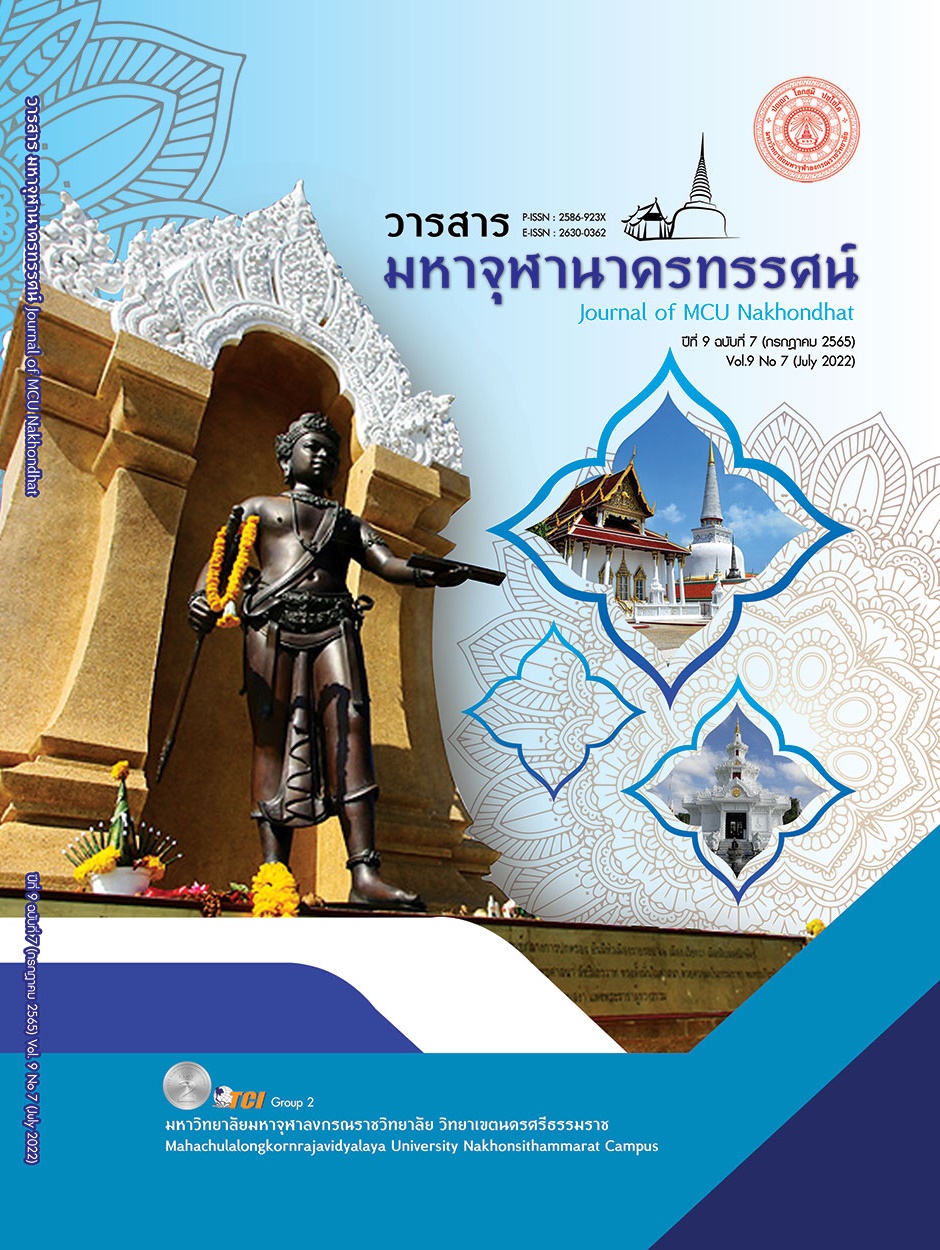A MODEL FOR CHANGE MANAGEMENT OF LEARNING MANAGEMENT IN DIGITAL AGE OF WAT NAWONG SCHOOL, PATHUMTANI PRIMARY EDUCATIONAL SERVICE AREA OFFICE 1
Main Article Content
Abstract
The objectives of this research article were to study the condition change management of learning management in the digital age at Wat Nawong School, establish the change management model of learning management in the digital age at Wat Nawong School, and experiment with and evaluate the change management model of learning management in the digital age at Wat Nawong School by using research and development that consisted of 3 steps: 1) To study the condition change management of learning management in the digital age, use a questionnaire from 54 administrators and teachers at Wat Nawong School. 2) Create a model for change management of learning management in the digital age by interviewing 9 experts. 3) Experiment and evaluation in the change management model of learning management in the digital age at Klong5 School, assessing the feasibility and usefulness and using the assessment form by administrators of 30 schools. The statistic used to analyze were Mean Standard Deviation and content analysis. The research results were as follows: 1) Overall, the condition change management of learning management in the digital age was at the highest level consisting of 3 components: learning management in the digital age, changes management of learning management in the digital age, and the role of the individual in the change in learning management. 2) The change management model of learning management in the digital age has 2 main components: Change management of learning management in the digital age has 3 aspects, and the change management process has 8 steps. 3) Overall, the result of the experiment and evaluation of the change management model of learning management in the digital age was a possibility and a benefit at the highest level.
Article Details

This work is licensed under a Creative Commons Attribution-NonCommercial-NoDerivatives 4.0 International License.
References
ชินวัตร เจริญนิตย์. (2564). การใช้เทคโนโลยีดิจิทัลในการบริหารงานวิชาการในสถานศึกษา. วารสารบริหารการศึกษาบัวบัณฑิต, 21(1), 67-74.
บรรจบ ภูโสดา. (2556). รูปแบบการบริหารการเปลี่ยนแปลงการจัดการเรียนรู้ที่เน้นผู้เรียนเป็นสำคัญในโรงเรียนประถมศึกษา. วารสารศึกษาศาสตร์ มหาวิทยาลัยนเรศวร, 15 (พิเศษ), 91-102.
เพชริน สงค์ประเสริฐ. (2550). การพัฒนารูปแบบการบริหารงานวิชาการโดยยึดหลักการทำงานเป็นทีมในสถานศึกษาขั้นพื้นฐาน. ใน วิทยานิพนธ์การศึกษาดุษฎีบัณฑิต สาขาการบริหารการศึกษา. มหาวิทยาลัยนเรศวร.
วรรณภา เอราวรรณ์. (2561). การบริหารการเปลี่ยนแปลงของผู้บริหารสถานศึกษาที่ส่งผลต่อการจัดการเรียนรู้ในศตวรรษที่ 21 ของสถานศึกษา สังกัดสำนักงานเขตพื้นที่การศึกษาประถมศึกษาเพชรบุรีเขต 2. วารสารมนุษยสังคมปริทัศน์, 20(2), 93-107.
สุกัญญา แช่มช้อย. (2561). การบริหารสถานศึกษาในยุคดิจิทัล. กรุงเทพมหานคร: โรงพิมพ์แห่งจุฬาลงกรณ์มหาวิทยาลัย.
เอกชัย กี่สุขพันธ์. (2559). การบริหารสถานศึกษายุคดิจิทัล (School Management in Digital Era). เรียกใช้เมื่อ 20 พฤษภาคม 2565 จาก https://www. trueplookpanya.com/knowledge/content/52232
เอกชัย กี่สุขพันธ์ และคณะ. (2553). การบริหารการเปลี่ยนแปลง (Change Management). กรุงเทพมหานคร: โรงพิมพ์แห่งจุฬาลงกรณ์มหาวิทยาลัย.
Donnelly, et al. (1975). Fundamentals of Management: FunctionsBehavior: Applied Englewood Cliffs. New Jersey: Prentice-Hall.
Kotter, & John P. (2002). The Heart of Change. Harvard : Business School Press.
Krejcie, R. V.; & Morgan, D. W. (1970). Determining Sample Size for Research Activities. Educational and Psychological Measurement, 30 (3), 607-610.
Steers. (1977). Organizaational Effectiveness: A Behavioral View. Santa Monica: Goody.


